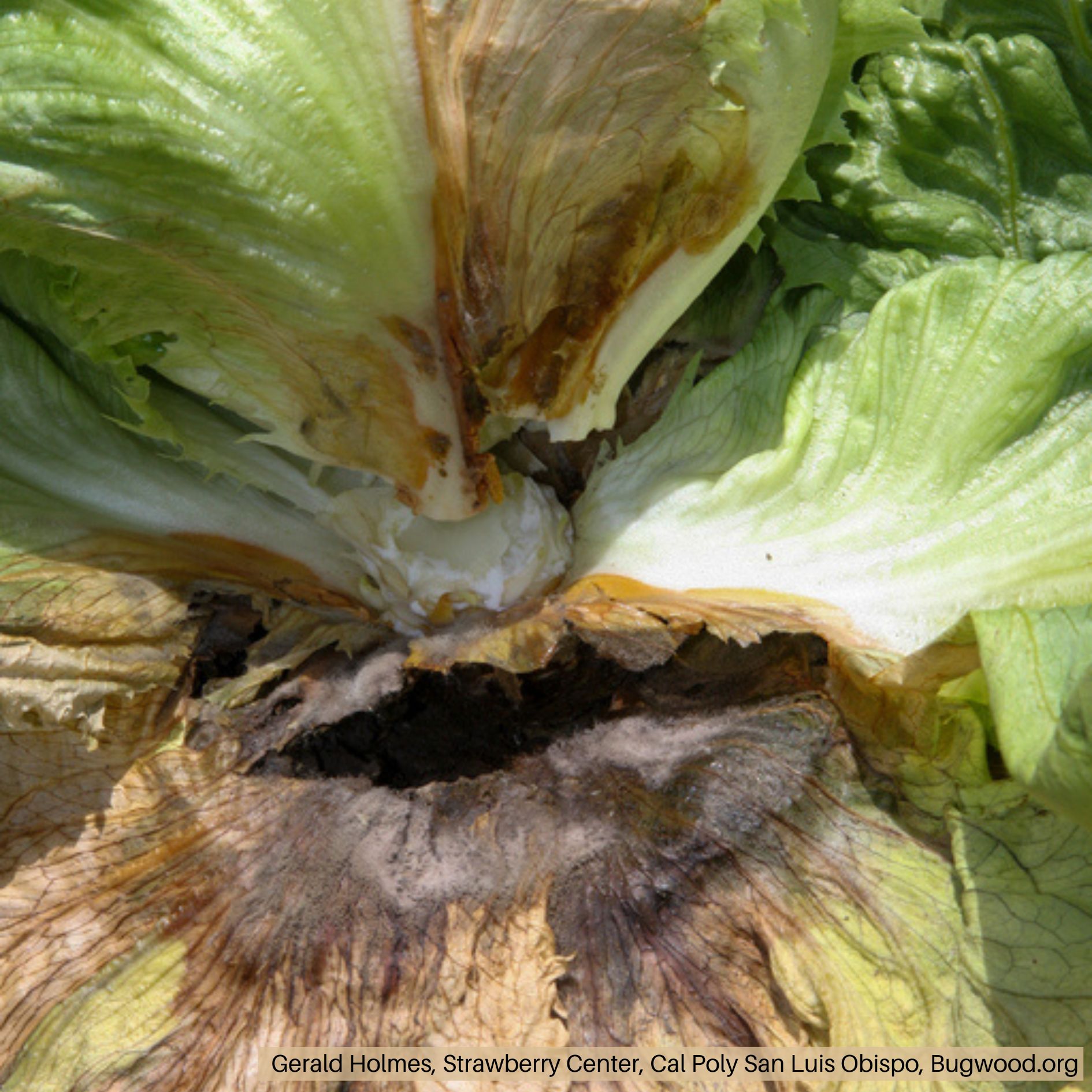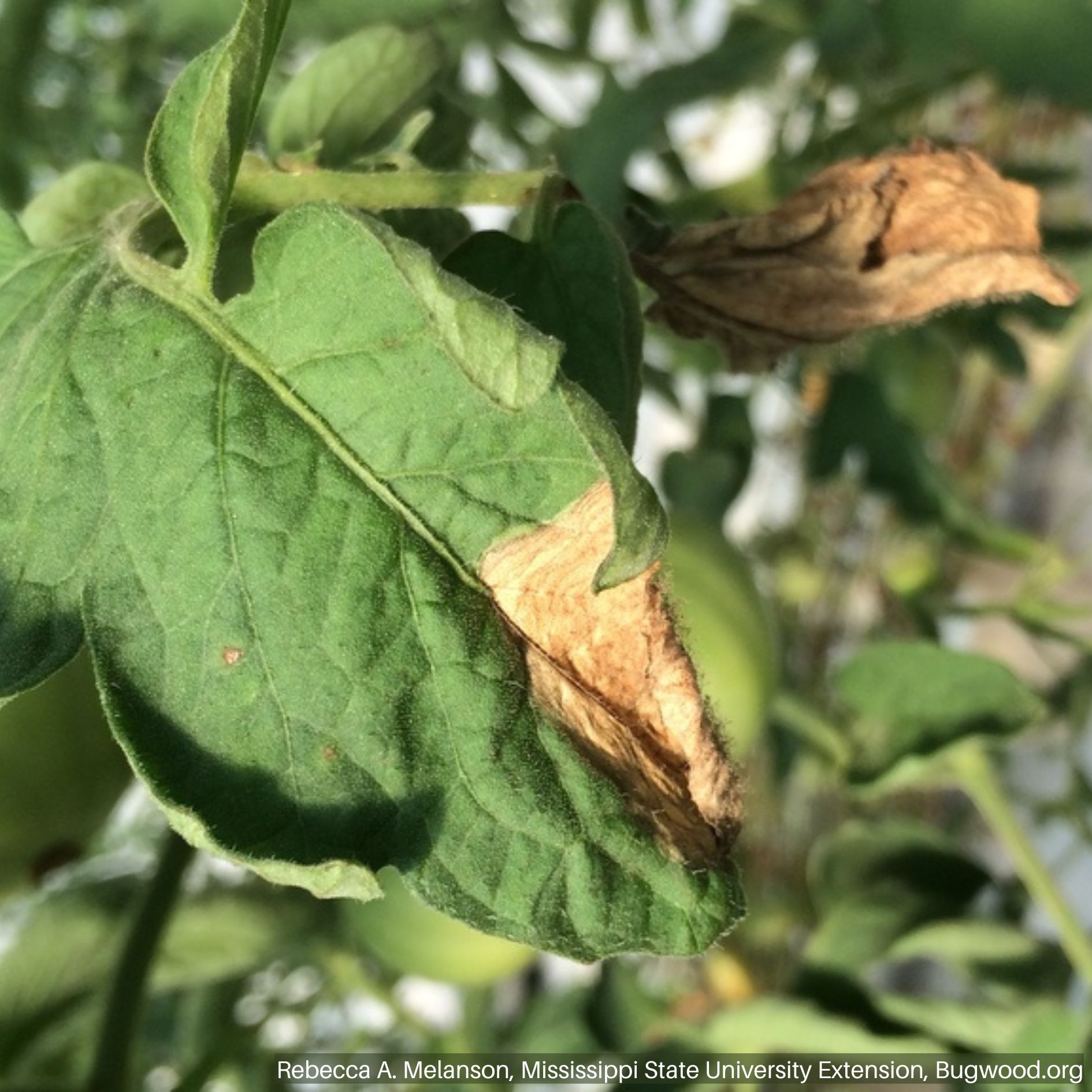Gray Mold on Vegetables
HOSTS
- Artichoke
- Asparagus
- Brassicas
- Cucurbits
- Leafy Greens
- Legumes
- Onions
- Root Crops
- Solanaceae Crops
DESCRIPTION
Gray mold, or botrytis blight, is caused by the fungus Botrytis cinereal. The fungus can infect a variety of plants including fruits, vegetables, and ornamentals. Plants can be infected during the growing period or after harvest during storage. Gray mold is especially prevalent in the greenhouse.
BIOLOGY
Botrytis cinereal can survive on dead plant matter or without a host, as sclerotia, black hardened structures. The sclerotia can survive dormant in the soil for years.
The fungus spreads by producing dusty, gray spores. The spores are released when conditions are warm (65-75°F) and wet. These spores can be spread by the wind, water, or contact with other plants. Spores can remain dormant on plant tissue for long periods of time, but will die when dried.
The fungus will first infect weaker tissues, such as seedlings, injured tissue, or decaying or aging fruit. The more susceptible tissue acts as a food source for the fungus, which it can use to infect healthy tissue.
SYMPTOMS
Symptoms of gray mold can vary depending on the host plant. Common symptoms include:
- Gray or brown necrotic spots on leaves, blossoms, or fruits
- Stem lesions
- Wedge-shaped lesions on leaf margins
- Gray, fuzzy growth on plant tissue
GENERAL MANAGEMENT
- Dispose of plant debris and infected plants.
- Sanitize tools after use.
- Keep leaves dry by avoiding overhead watering.
- Provide proper ventilation by ensuring plants are not overcrowded in the garden, field, or greenhouse.
- Extra ventilation may be required in greenhouses due to the humidity.





